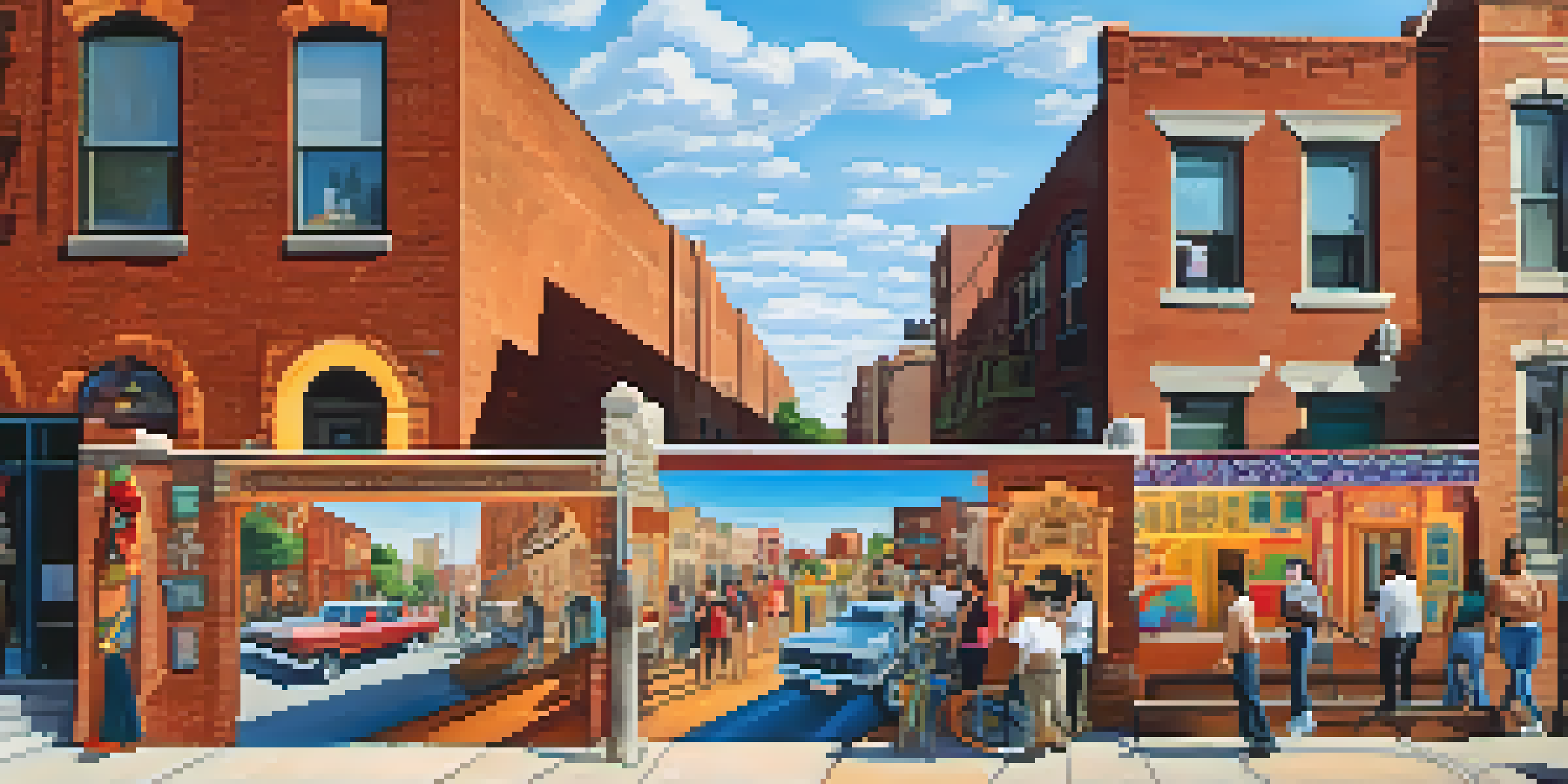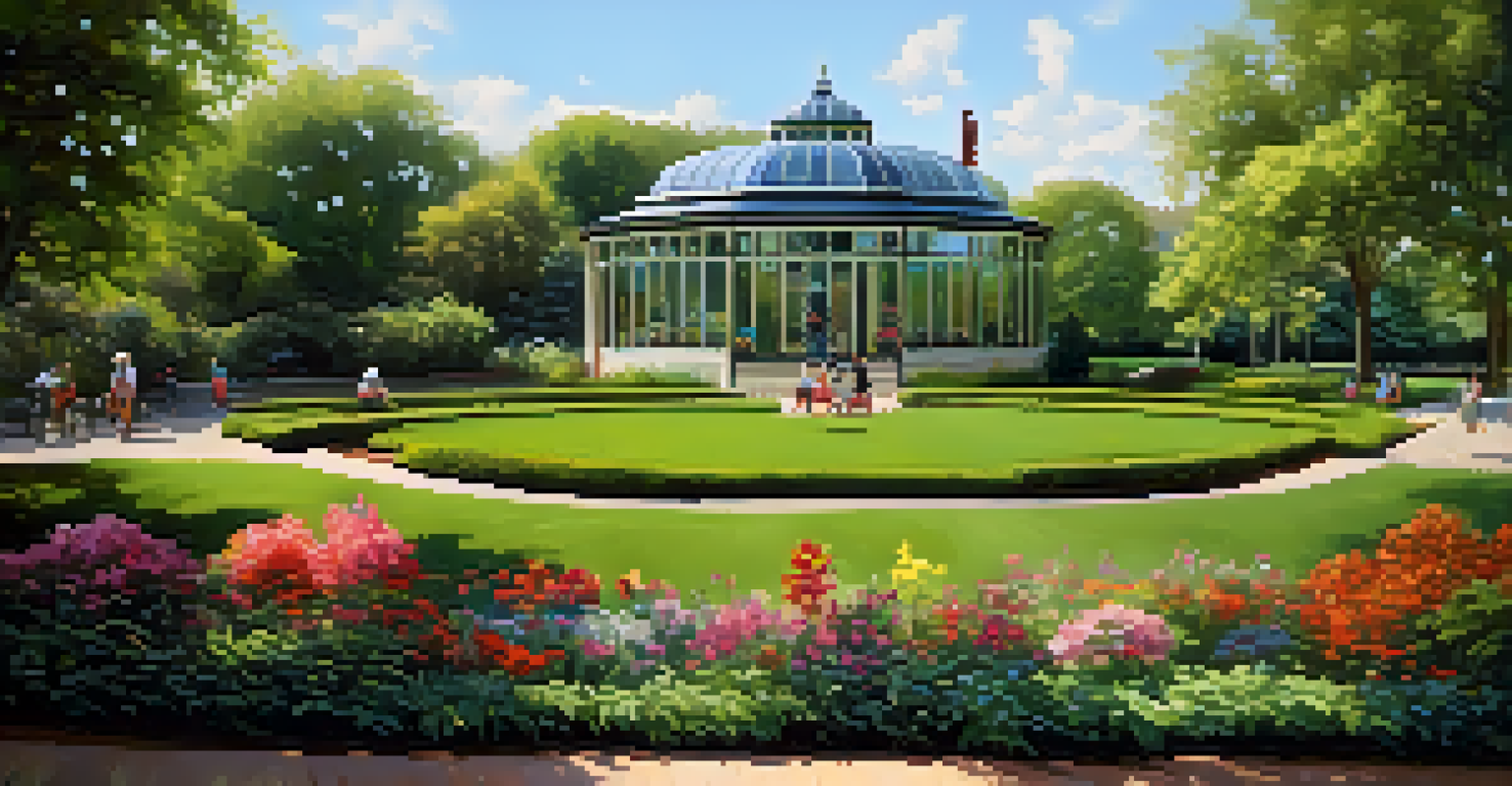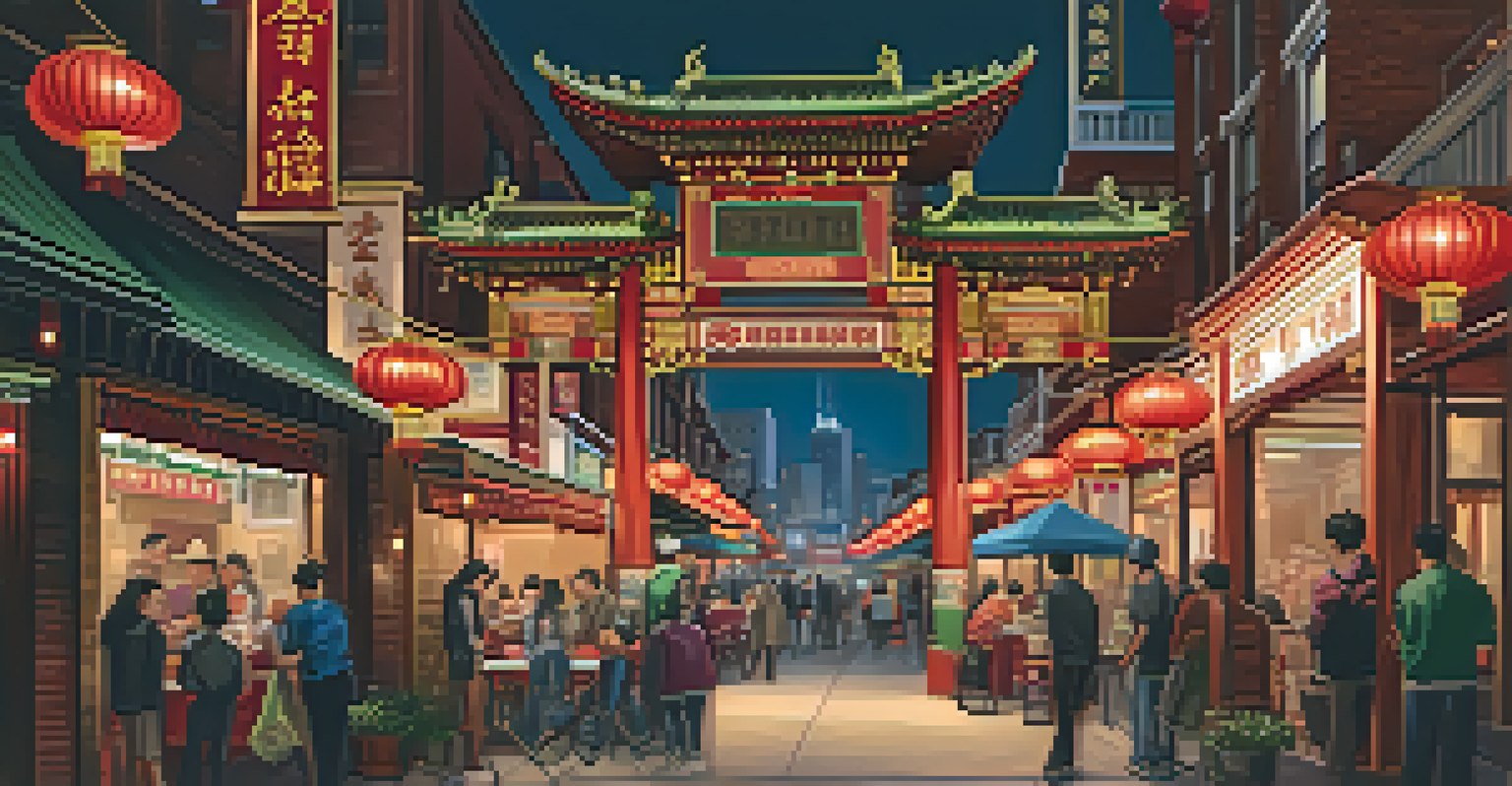A Guide to Chicago's Most Iconic Historic Districts

Introduction to Chicago's Historic Districts
Chicago is a city steeped in history, with numerous districts that tell the tales of its past. From the bustling streets of downtown to the serene neighborhoods, each area has its own unique story. Exploring these historic districts not only provides a glimpse into the architectural beauty of the city but also highlights the diverse cultures that have shaped Chicago. This guide will walk you through some of the most iconic historic districts, making your journey both educational and enjoyable.
Chicago is an unusually interesting city. It is the only city in the world that doesn't have a constant character; it is always changing, always evolving.
As you stroll through these districts, you'll notice the blend of old and new, with buildings that have stood for decades alongside modern constructions. This juxtaposition serves as a reminder of how Chicago has evolved over the years while still honoring its rich heritage. Each district has its own character, inviting visitors to immerse themselves in the local culture and history. So, whether you're a history buff, an architecture enthusiast, or just looking for a pleasant day out, Chicago's historic districts are a must-visit.
In this guide, we’ll delve into eight of Chicago's most iconic historic districts. Each section will provide insights into their significance, notable landmarks, and tips for making the most of your visit. Grab your walking shoes, and let’s embark on a journey through time!
The Loop: Chicago's Heart and Soul
The Loop is not just the downtown area; it's the pulsating heart of Chicago, brimming with history and energy. As one of the first historic districts designated in the city, it showcases stunning architecture, including the iconic Willis Tower and the Art Deco Chicago Board of Trade Building. Walking through the Loop feels like stepping into a living museum, with each building whispering stories of the city’s growth and resilience.

In addition to its architectural wonders, the Loop is a hub for cultural experiences. The Chicago Cultural Center, a former public library, offers free art exhibitions and concerts, making it a perfect spot for visitors. Don’t forget to check out the Millennium Park, where you can see the famous Cloud Gate sculpture, affectionately known as 'The Bean.' It’s an ideal place to relax and soak in the vibrant atmosphere of the city.
Chicago's Rich Historic Districts
Chicago's historic districts offer a captivating blend of architectural beauty and cultural diversity, inviting exploration and appreciation of the city's past.
When visiting the Loop, consider hopping on the ‘L’ train for a unique perspective of the city from above ground. The elevated train offers a scenic route with views of the historic district’s skyline. Whether you're exploring during the day or enjoying the sparkling lights at night, the Loop is sure to leave an impression.
Lincoln Park: A Blend of Nature and History
Lincoln Park is a delightful blend of nature and history, making it a favorite among both locals and tourists. This historic district is home to the expansive Lincoln Park, which features beautiful gardens, a zoo, and picturesque walking paths. The park itself is a historical landmark, as it was established in the 1860s and has served as a recreational space for Chicagoans ever since.
The city is a living, breathing entity, a reflection of its people and their histories.
Wander through the tree-lined streets and you'll encounter charming brownstones and historic mansions showcasing various architectural styles, from Victorian to Gothic Revival. Each home reflects the district's affluent past, offering a glimpse into the lives of Chicago's early residents. The Lincoln Park Conservatory, a stunning Victorian glass structure, adds to the area's charm with its exotic plants and seasonal floral displays.
If you're interested in history, don’t miss the Chicago History Museum located in the district. It houses fascinating exhibits on the city’s past, including its pivotal role in the Great Chicago Fire. Lincoln Park provides a tranquil escape from the city’s hustle while ensuring you’re surrounded by rich history.
Wicker Park: The Artsy Side of Chicago
Wicker Park is known for its vibrant arts scene, eclectic shops, and historic charm. Once a neighborhood of stately mansions, it has transformed into a hub for creativity and culture. As you wander through the area, you'll discover art galleries, vintage boutiques, and lively music venues, making it a hotspot for artists and musicians alike.
The district's historic buildings, many dating back to the late 19th century, provide a beautiful backdrop for this artistic community. The iconic Wicker Park itself is a great place to relax, featuring a charming fountain and plenty of green space. It’s not unusual to find local artists displaying their work or musicians performing in the park, adding to the district's vibrant atmosphere.
Unique Experiences in Each District
Every historic district in Chicago, from the vibrant Wicker Park to the serene Lincoln Park, provides distinct cultural experiences and landmarks that reflect the city’s heritage.
Wicker Park also hosts numerous festivals throughout the year, celebrating music, art, and food. These events draw crowds from all over the city, creating a sense of community and showcasing the district's unique spirit. A visit to Wicker Park guarantees a dynamic experience filled with creativity and history.
Hyde Park: A Cultural and Historical Gem
Hyde Park is a cultural and historical gem that offers a glimpse into Chicago's intellectual heritage. Home to the prestigious University of Chicago, this district boasts stunning Gothic architecture and a vibrant academic atmosphere. The university campus itself is a historic district, showcasing notable buildings like the Rockefeller Chapel and the Smart Museum of Art.
As you explore Hyde Park, you'll find a mix of charming residential streets and bustling commercial areas. The neighborhood features a wealth of cultural institutions, including the DuSable Museum of African American History, which highlights the contributions of African Americans to the city. Additionally, the historic Robie House, designed by Frank Lloyd Wright, is a must-see for architecture aficionados.
Hyde Park is also known for its beautiful parks and waterfront views along Lake Michigan. The area provides plenty of opportunities for outdoor activities, from leisurely walks to picnics by the lake. With its rich history and cultural offerings, Hyde Park is a must-visit for anyone looking to experience Chicago’s diverse heritage.
Old Town: A Step Back in Time
Old Town is a charming historic district that takes you back in time with its cobblestone streets and Victorian-era buildings. Once a German neighborhood, it has transformed over the years but has managed to retain its historical charm. The area is particularly known for its well-preserved architecture, including the iconic Old Town Triangle District, which features stunning row houses.
In addition to its architectural beauty, Old Town is famous for its vibrant entertainment scene. The neighborhood is home to the renowned Second City theater, which has launched the careers of many famous comedians. Visitors can enjoy a night of laughter while experiencing the creative spirit that Old Town embodies.
Culinary and Cultural Adventures
Visitors can indulge in authentic cuisines and participate in cultural events, particularly in areas like Chinatown and Pilsen, showcasing Chicago's rich immigrant history.
Old Town also hosts various festivals throughout the year, including the Old Town Art Fair, which showcases local artists and their work. This sense of community and celebration of the arts makes Old Town a delightful place to visit. Whether you’re exploring during the day or enjoying the nightlife, Old Town offers a truly unique experience in Chicago.
Pilsen: A Cultural Mosaic
Pilsen is a vibrant historic district known for its rich Mexican heritage and artistic community. The area is filled with colorful murals that tell stories of the neighborhood's culture and history, making it a living canvas for artists. As you walk through the streets, you’ll encounter local galleries, boutiques, and authentic Mexican restaurants that showcase the district’s unique identity.
The National Museum of Mexican Art, located in Pilsen, is a treasure trove of cultural artifacts and exhibits that celebrate Mexican art and history. It’s an excellent place to learn about the contributions of the Mexican community to Chicago’s rich tapestry. Additionally, the area hosts various cultural events and festivals, such as the annual Día de los Muertos celebration, which draws crowds from all over the city.

Pilsen’s lively atmosphere and welcoming community make it a fantastic place to visit. Whether you’re indulging in delicious tacos or admiring the vibrant street art, Pilsen offers a glimpse into the heart of Chicago’s diverse cultural landscape. This district is a reminder of the city’s rich immigrant history and the ongoing contributions of its communities.
Chinatown: A Cultural Escape
Chinatown is a bustling historic district that offers a unique cultural escape within the city. Known for its vibrant streets lined with shops, restaurants, and markets, this area is a feast for the senses. From the ornate entrance gate to the bustling food markets, Chinatown is a celebration of Chinese culture and traditions right in the heart of Chicago.
As you explore Chinatown, be sure to indulge in authentic cuisine, from dim sum to Peking duck, at the many restaurants and eateries. The area is also home to the Chinese-American Museum of Chicago, which highlights the contributions of the Chinese community to the city’s history. This museum provides a deeper understanding of the cultural significance of the district and its people.
Chinatown hosts various festivals throughout the year, including the vibrant Chinese New Year celebrations, which feature parades, performances, and traditional lion dances. These events foster a sense of community and allow visitors to experience the rich traditions of Chinese culture. A visit to Chinatown is not just a culinary adventure; it’s an enriching experience that showcases the diversity of Chicago.